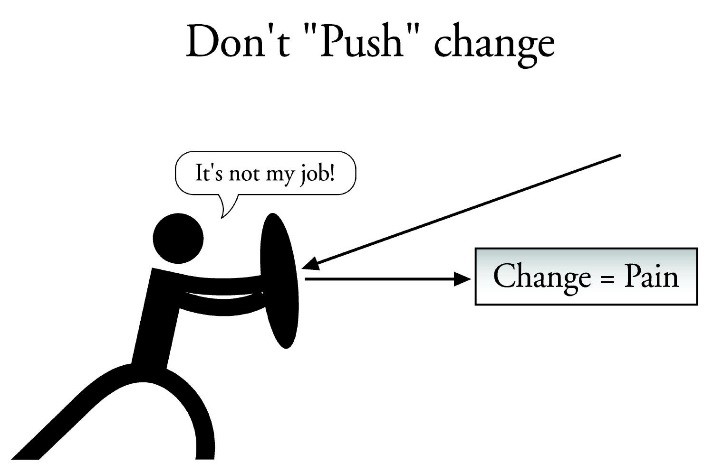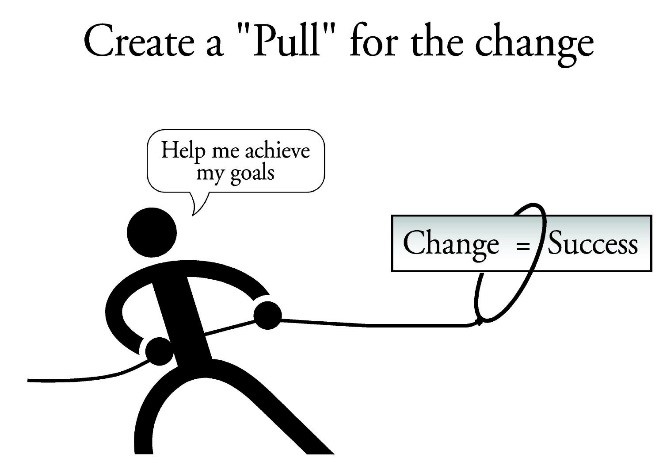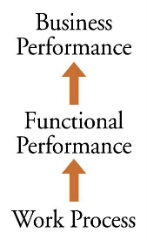By: Jeff Chan
Imagine you’ve “gone live” with a new technology initiative. Success! You’re well on your way to meeting ambitious new performance goals. But wait, the issues the new technology was intended to change are still “live.” What happened? Key project milestones were met, testing was completed, “go-live” happened on schedule, and training was completed on time, but now there’s a lot of finger-pointing.
Producing a superior product or service requires the alignment of many organizational elements including processes, people, goals, strategy, organizational structure, responsibilities, and enabling technologies. When results do not meet expectations, organizations often decide to change something, anything.
Over the past 20-to-30 years, as technology has evolved in its ability to support and enable organizational and transactional processes, it has become the primary target of change. It’s an easy target because it’s tangible, discrete, and a key interface for people and work processes.
By focusing on a single organizational element, and not the process as a whole, technology changes mislead project teams into following an ineffective path to improving business performance. Achieving ambitious project goals where technology is concerned requires you to change the way you change.
Why technology changes fail
- The focus is solely on the thing and not the ings
- The change is pushed by project teams rather than pulled by the organization
- Backs are slapped and congratulations prematurely offered when software goes live and user training is completed, not when all the other organizational elements that drive business performance are changed, too
The focus was solely on the “thing” and not the “ings”
If you chose to improve employee productivity, you might decide the “thing” that needs to be changed is the organization’s talent and performance management system. A great tool, but you can’t improve the managING of employee performance by changing the data management element alone. The “ings,” like a manager’s ability to define roles; select the right talent; lead, manage, and communicate within the process; set appropriate employee goals; and align rewards to the achievement of these goals, must be addressed as well. The technology is merely a tool to enable and support the process. You must shift your focus.
Change the way you change:
- Start with the desired end in mind. What does success look like when the project is complete? What are all the elements that contribute to this?
- Ask yourself: What new skills will employees need to succeed? Do we have employees with those skills? How will they be incented to use new processes and procedures? What new roles and responsibilities will be required? What are employees currently doing that will have to stop, and what are they not doing that they will have to start? The answers to these questions will provide you with a better understanding of everything that needs to change to create highly productive employees.

The change was pushed by project teams rather than pulled by the organization


Very often, changes are “pushed” onto employees’ plates by project teams with little explanation for why. Without an understanding of why change is needed and how it will help employees be more successful, they may view the change as an obstacle to accomplishing “what they are paid to do.” There is no motivation or incentive to change, so if it doesn’t happen, employees may take a “no-skin-off-our-noses” attitude. The change can be de-prioritized and, worse yet, avoided.
One example: A well-known chemical company wanted to improve the accuracy of its sales orders, so it implemented a new sales order data-entry portal (the “thing”) for the sales force to use directly. However, the sales force continued to rely on the customer service team to enter sales orders – “entering data isn’t what we get paid to do!” Data accuracy was not improved, and despite the significant investment in new technology, business performance (e.g., accurate product fulfillment, customer satisfaction) did not improve either.
Conversely, we all know that when someone really “wants” something, a higher level of persistent energy will be applied to getting it. When the chemical company re-launched the portal and gave the sales team new performance-based order-entry goals, as well as decreased the availability of the customer service team, the sales team eagerly adapted to the new process, data accuracy was significantly improved, and customer satisfaction increased proportionately.
Change the way you change:
- Communicate the “whys” of the change first. Then communicate them again, and again
- Focus communications on key influencers to establish buy-in and support for the change
- Tie the success of the change to individuals’ and teams’ success
Backs were slapped and congratulations prematurely offered
Hold the applause. “Live” dates met and user training completed on time do not translate to successful technological change. When project teams are allowed to move on to the next project while work processes still support old ways of doing things, effective change did not happen. To quote a famous TQM consultant with the Yankees, “It ain’t over till it’s over.” Where technological change is concerned, it ain’t over till the project team has aligned each element of a work process to new performance goals and everyone in the organization is encouraged to keep their eyes on the same new ball.
Change the way you change:
- Project team success should be based on new process-performance levels or business performance, not just the completion of tasks
- Project teams should model the new process (the “ings,”) before implementing the tool (the “thing,”) to understand every aspect of the required change
- You should be able to map every organizational improvement project to an ultimate improvement in business performance. As the driver tree below shows, improving the accuracy of order entry data – via change – leads to improved functional performance, which in turn improves the organization’s financial performance


Technological change is a significant investment. Many in an organization fully expect the sizable investment to deliver expected results, and then deliver some more. Enabling tools, regardless of their cost, are but one element of any work process and cannot be the be-all, end-all of improved business performance. Effective change will not occur until:
- You look more broadly at all the elements critical to the success of a given work process and align them to the new desired state
- You convince countries/global regions and individuals to demand the change so they can achieve regional/individual performance goals
- Project teams drive toward improved business performance goals instead of go-live dates and location-specific agendas
- Global implications are not an afterthought, but a forethought
Avoid the finger-pointing and realize the full value of your new technology.
Jeff Chan teaches Change Management for the Wisconsin School of Business Center for Professional & Executive Development. To learn more about his upcoming course dates, contact [email protected]
About the Instructor: Jeff Chan

Jeff specializes in working with companies to improve organizational performance and productivity through expertise in change management and business transformation. He has held general management and senior human resource positions with BP/Amoco, Hewitt, Sears, Spiegel, and for the past 10 years has been the President of Chan Management Consulting.